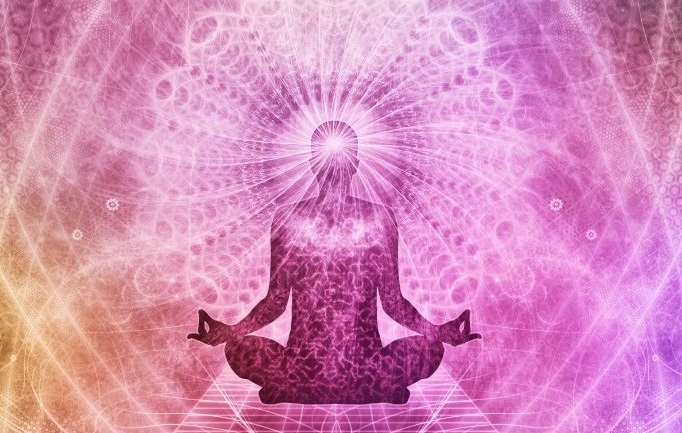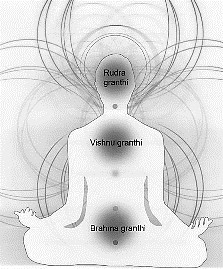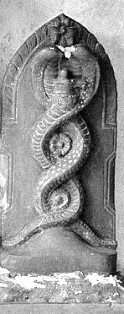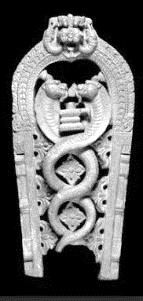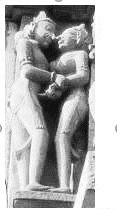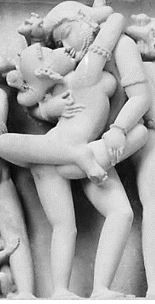The temple complexes of India are adorned with sculptures of several themes related to social, political, cultural history incorporating the heritage values of vedas, yoga shastra, puranas epics, etc. Some sculptures in the temples of India are not associated with the puranic episodes or deities but look different like a bold representation of intimate embrace and love in their execution and appear to reveal some aspects of Tantra Yoga which were also an integral part of the temple sculptures very much like the depiction of puranic or religious episodes. The philosophy of kundalini Yoga, a branch of tantra yoga is associated with the flow of energy in the channels called Ida, Pingala nadis, (the female and male channels of astral body, comparable to the sensory and motor nerves of physical body) and its criss-cross centers in the spinal canal called Sushumna nadi called chakras. The three major intersections in the central sushumna nadi are at muladhara (pelvic region), anahata (chest region) and ajna chakras (between the eye brows) are interpreted as granthis because the exchange energies of physical and mental levels occur at these three places and named after the trinity as the presiding deities.
Granthi means a knotted area which prevents the free flow of energy (Prana) from rising upwards. The concept and explanations related to granthis is a vague term that deals with very internal issues of undoing it and hard to give a figurative expression in stone medium because they are levels of awareness where the power of maya, ignorance and attachment to material things are especially strong. According to the ancient spiritual science, every human has a gross physical body, the subtle astral body, and mind as its counterpart which are linked to each other. Though mind resides and interacts in the physical body, it cannot be given a proof for its structure nor location in the body, but mind influences the astral body also. The energy for physical body is through external aids, but, energy for astral body is dependent on the calm state of mind which can be achieved by getting out of the worldly entanglements termed as granthis.
The Ida and pingala nadis that are like spirals of opposite poles of the central axis intertwine and unlock while passing through the seven chakras. Psychic knots of granthis are like protective blockages for the gradual change in awareness and open only with purification of mind and balance between the two nadis. The purpose of granthis is to block the sudden upward flow of prana, are like circuit breakers to protect the overload that may occur to the practitioner in case of a spontaneous ascension. The display of ‘granthis’ are associated with the ‘Trinity’ as the presiding deities and are called
- Brahma granthi at muladhara chakra, holds the consciousness entangled at the worldly level related to physical dimensions like sensuality or procreation, anxiety for survival and fear for lack of grounding.
- Vishnu granthi at anahata chakra signifies the entanglements from emotions related to bondage, ego and love for power.
- Rudra granthi at ajna chakra, the forehead knot, related to pride or discrimination that comes from service to others, or as knower of knowledge, preventing from the goal of unity with all beings in a non-dual state.
They are visualized like psychic knots or obstacles on the path of the awakened kundalini, (The power of awareness) which are difficult to pass through for every human, as it brings about a change in personality. Each aspirant must transcend these barriers to make a clear passageway for the ascending kundalini. In tantra based sculptures, the two-major component nadis, Ida and pingala of kundalini as are picturized in anthropomorphic form as male and female human figures and crisscross is indicated as in contact or the hand positioned in the specific region of chakras. In sculptural representations of this topic, the figures, since it is related to mind, the core of ‘chitta’, are usually presented in nude form, as bare body representing the unadorned form of mind. In symbolic representations, they are like male and female snakes coiling at three places. The psychic Knots of granthis are depicted in symbolized form as lingas the Shiva symbol. Different temples use different motifs to convey this vague topic in sculptures. The two sculptural representations are:
- Symbolic representation of granthis, through the Linga and snakes.
- Representation of granthis in the human body in a personified form.
Symbolic Representation of Granthis, through the Linga & Snakes
The granthis are represented symbolically at the coiling of two snakes around the central axis by the three psychic knots represented as lingas. The lingas are Shiva symbols, the subtle spaces, where the universe is formed and is dissolved. In the symbolic form, the lingas are placed in between the space of two inter twining snakes. The intertwining snakes are symbols of fertility for procuring progeny, and are also the symbolic forms of ida and pingala nadis. It could also be the union of the male and female naadis that unite at Sushumna and lead to the progress of kundalini awareness. Fig. B has the representation of linga in between the intersecting snakes. The bottom two Brahma and Vishnu granthis as lingas are in the petals and top one, in between the snakes head is the representations of the Rudra granthi.
Brahma Granthi at muladhara chakra is represented by the Dhumra Lingam. Dhum means smoky. The linga is represented smoky and ill-defined (some Lingas made of Sphatika – crystalline form of quartz stone) as a Symbol of the physical world. It is also called Svayambhu linga- the self-created linga. It signifies the establishing of life principle in totality.
Vishnu Granthi in anahata chakra (between Manipura and ajna chakra) is represented as Bana Linga. The linga is depicted red or gold colored as a Symbol of the subtle world. Clearing Vishnu knot is to perceive the existence of universal life principle.
Rudra Granthi in ajna chakra is called Itara or Itakhya Linga. The linga is black, well defined with a very consolidated outline. Here, in ajna, the awareness of ‘what I am’ is more sharply defined and various capacities are being awakened. In figures, 2. B and C, the dhumra and bana linga are depicted in lotus petals and only Itara linga is well defined. It signifies a state of non-duality. Clearing of Rudra granthi promotes spiritual vision. Awareness goes at transpersonal level with super consciousness.
Representation of Granthis in a Personified Form
Some sculptures depict the two male and female figures to be in contact at three or five regions like (see Fig. 3A and 3B) foot, knee, genital place (muladhara), heart (anahata) and tip of the nose that is connected to ajna chakra. According to Sadguru Jaggi Vasudev, tantra is a limb of yoga, the inner technology to upgrade and move the inner energy through conscious awareness. Tantra yoga is not aimed for satisfaction of physical existence nor uninhibited sex. It is the method for making higher capacities with body, mind and intelligence, which become like instruments and learning to use as a stepping stone for higher dimensions.
Kundalini yoga, a classification under tantra yoga is the form of subtle energy that flows in tubular channels called Nadis towards the conductor. The conductor is nothing but the nerve energy in the physical body that is encased in the spinal canal and called Sushumna. The intersections are recognized as chakras, seven in number, where the two naadis crisscross. At every chakra, a perfect balance and harmony must be established between the two ida, pingala nadis or else the energy of kundalini cannot progress to higher levels in the central channel of sushumna.
In sculptural representations of tantra yoga depictions, the mind was projected as the female deity and prana as the male deity. Some sculptures depict the two male and female figures to be in contact at three or five regions like foot, knee, genital place (muladhara), heart (anahata) and tip of the nose (that is connected to ajna chakra) . Some schools recognize the chakras to be sixteen starting from foot, knee, palm, and so on. The contact at the foot and knee (see fig. 3A) is suggestive of the lower points from which the ida and pingala (Female and male nadis) arise and proceed. The contact at foot is suggestive of the initial phase of activating the ida and pingala nadis. To clear Brahma granthi is to establish in totality, clearing Vishnu granthi is perceiving the existence of universal life principle and to clear Rudra granthi is to attain a non-dual state of realization of oneness and universal joy.
Brahma Granthi
Brahma granthi functions in the base region of mooladhara chakra at genital area and hence a display of organs. It implies the entanglement with physical pleasures, material objects and excessive selfishness or a sense of fear. It also implies the ensnaring power of tamas – negativity, lethargy and ignorance. Such negative qualities act as hindrances and stops the serpent power kundalini from awakening. Once this blockage is removed from the energy instincts of the deep rootedness with worldly affairs, the realm of consciousness gets awakened and the trapped serpent power energy is released. The kundalini or primal energy is thus able to rise beyond mooldhara and swadhisthan without bogged down by the attractions to which our consciousness is hooked. On breaking open the Brahma granthi, the practitioner feels relaxed and enjoys bliss arising from void. Lord Brahma gives the way.
The figures related to the granthis are nude because they are related to the state of mind ‘chitta’ and personal. Muladhara relates to, Ajna chakra as the starting and release points of prana, which is indicated in the sculptures as contact points. Muladhara has direct link to Ajna chakra – situated in mid brain but indicated as above the nose, between the eye brows. (The subtle energy of these two Ida-Pingala currents cross over to connect with the right and left hemispheres of the brain.)
Brahmagranthi is the knot located at the muladhara chakra is the manifest force of the energy of life and creation, depicted in sculptures as the pleasure of touch. It is known as blockage of Brahma because it holds the consciousness at the level related to physical dimensions like sensuality or procreation. Once this blockage is overcome, the consciousness of deep rootedness to worldly pleasures is released. The kundalini can rise above, crossing this knot. The Fig. 3. B depicts the contact established at the foot, genitals indicating about the first Brahma granthi. Fig 3 C shows chin mudra in hand indicating the aspect of focus of mind on Prana.
Vishnu Granthi
The contact at chest is the second stage of awareness at Vishnu granthi – to detach from emotions related to bondage. Vishnu granthi operates in the region of anahata chakra at the heart region. It is associated with the bondage of emotional attachment and attachment to people and inner psychic visions. It relates to the qualities of rajas – the tendency towards passion, ambition, bondage and assertiveness, individual ego and power. Once the blockage at Vishnu granthi is removed, the practitioner feels great bliss. The sustenance energy undergoes a change from the localized centers of the physical level to the universal level which means the energies of the body become harmonious with the energies of the cosmos. The interaction between the individual personality and the cosmos begins to happen naturally & spontaneously, enhancing the quality of compassion, Lord Vishnu making the way.
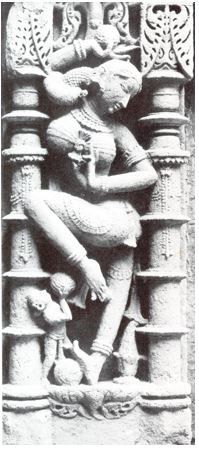 Fig 4. The release of the Vishnu knot / granthi at the heart region, anahata chakra (Picture from Rani ki vav).
Fig 4. The release of the Vishnu knot / granthi at the heart region, anahata chakra (Picture from Rani ki vav).
The position of placement of chakra wheel as balls suggest that she is activating the ida pingala in legs as well as in hand with the acupressure or chakra ball. It also gives a hint that opening out of Vishnu granthi is not a spontaneous act. It begins from the hand and leg nadis, followed by opening of Brahmagranthi at muladhara. In right hand as she is holding the ball, highlighting the thumb as the starting point of nadis in hands. Activating the centre of hands and feet are beneficial to health.
The freedom from the knotty – worldly problems and the freedom from knotty congestion in her meridians that restricts the flow of bio energy at her mental and physical levels – are viewed as obstacles, the root cause for problems and indicated as the cloth around the breasts called ‘kanchuka’ with a knot. Philosophically, clearing the knot of kanchuka means liberation – a freedom from ignorance, bondage, commitments due to obligations of bondage, power are the obstacles project as knotty problems in life. The aspirant is constantly advised to dissociate from all limitations and identify oneself with all the pervading, blissful, non-dual spirit – ‘The Brahman’.
Rudra Granthi
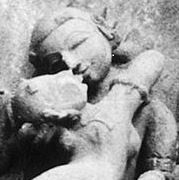 Fig.5A. The contact at nose points (picture from Khajuraho)
Fig.5A. The contact at nose points (picture from Khajuraho)
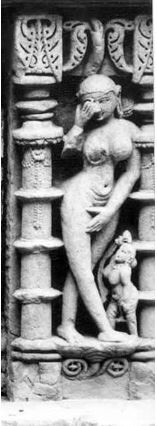 Fig 5B. The depiction of the location of Ajna chakra (picture from Rani ki vav)
Fig 5B. The depiction of the location of Ajna chakra (picture from Rani ki vav)
The loving gaze was used as a simile in tantra based sculptures to explain the abstract concept that mind (female) and prana (male) are harmonizing and mind is coming under the control of prana, in other words mind is one with the object concentrated upon, enjoying supreme bliss and super consciousness called ‘samadhi’.
The third contact at nose tip is related to crossing the hurdle of Rudra granthi – restraining from the thoughts of pride that comes sometimes from service to others or as knower of knowledge. The pride prevents one from uniting with all with a non-dual thought. The three granthis when crossed, open the doors of sahasrara chakra promoting spiritual vision and super consciousness. (The ida pingala nadis first intersect at the base of the spine and end at the third eye center indicated at the apex of the nose. At the third eye center, these two currents cross over to connect with the right and left hemispheres of the brain.)
The nose of the two male and female figures touch to symbolize the revitalization of memory and concentration of intuitive knowledge or cognition. Physiologically, the nasal nerves of olfactory bulb travel directly to the limbic area of the brain which controls the unconscious intuition of memory and sexuality. It functions in the region of ajna chakra (see fig 5B) governing the ajna and sahasrara chakras. It represents the transformation of an existing form, idea or concept into the universal aspect. It is associated with the attainment of siddhis, a psychic phenomenon but still attached to and the concept of self as the power. In psychological perspective, though serving others is a completely satisfactory way to spend one’s life at this stage, this service could create resentment against others, and view them as lesser beings as the pride of acquiring knowledge sometimes gains an upper hand. One must surrender the sense of individual ego and transcend duality to make further spiritual progress and then complete the circle by bringing that consciousness into compassionate actions. With that omniscient awareness in hand, the kundalini of the aspirant moves on to Sahasrara chakra where the final merge of the individual soul or atman with the universal cosmic soul takes place with a realization of oneness.
When the Brahma granthi is pierced through by pranayama, then a sort of happiness is experienced in the heart. Many sculptures classified as ‘Alasa kanya’ a lady in relaxed state are depictions related to the piercing of Brahmagranthi. Vishnu knot is pierced which is indicated by highest pleasure experienced like at union. When the Rudra granthi is pierced and the prana enters the seat of the Lord (the space between the eyebrows), and one attains the divine status of spiritual vision.
Reference: Yoga in Indian Temple Sculptures: A New Perspective. Rekha Rao
Featured Image: Pixabay
Disclaimer: The opinions expressed within this article are the personal opinions of the author. IndiaFacts does not assume any responsibility or liability for the accuracy, completeness, suitability, or validity of any information in this article.
Independent Researcher and Indologist, Mysore

